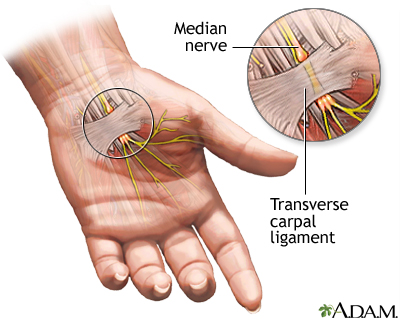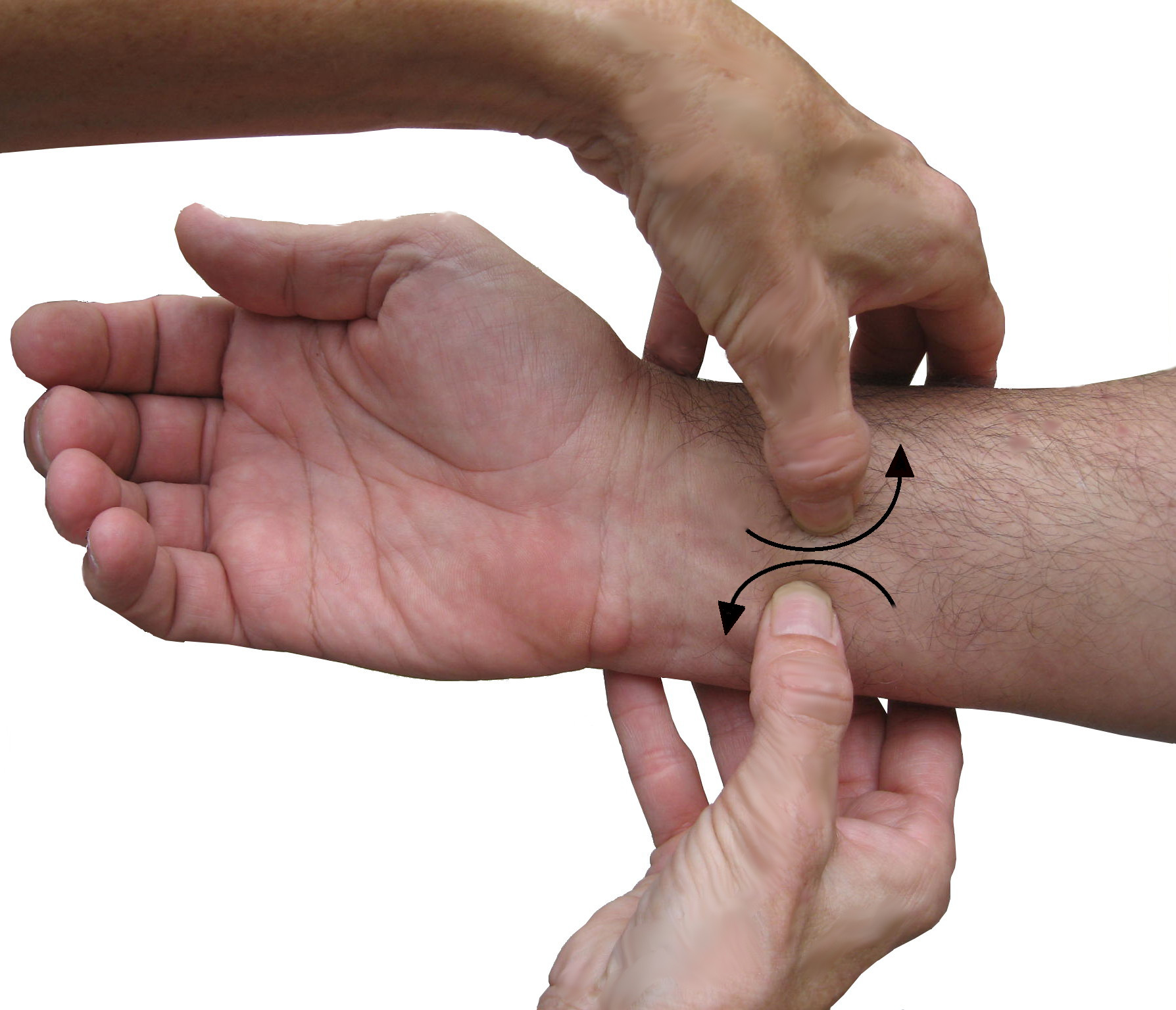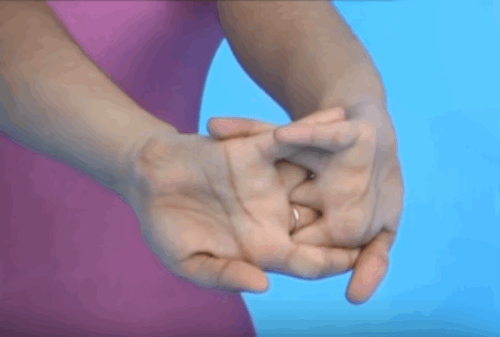How to Avoid Carpal Tunnel During Pregnancy
Who expected carpal tunnel?
By far, pregnant women make up the largest proportion of carpal tunnel sufferers. But I’m frequently surprised that most were never told to EXPECT carpal tunnel during pregnancy. Sure, every mom-to-be anticipates morning nausea or excessive urination….but carpal tunnel syndrome?
What is carpal tunnel syndrome?
Carpal tunnel syndrome (most people just call it “carpal tunnel”) is a condition where the tissues inside your wrist crush the adjacent median nerve. This occurs in a narrow anatomical passageway, the “carpal tunnel” — hence the name of the disorder.
Usually, the crushing occurs due to swollen tendons. The swollen tendons push on the median nerve inside the carpal tunnel passageway. They push with so much pressure that you feel pain, numbness, tingling, burning or weakness in your hand or fingers.
In some people, the hand may feel sore. In others, the fingers feel puffy. The thumb is usually worse than the other fingers. But carpal tunnel never affects the fifth (“pinky”) finger. Over 80% of people report nocturnal numbness. As a result, they have to wake up and shake out their numb or tingly hands.
One of the greatest risk factors for getting this condition is pregnancy. Up to 62% of women will see symptoms of carpal tunnel syndrome during pregnancy, mostly in their third trimester. That means if you’re pregnant, you can be almost certain those symptoms are carpal tunnel and not something else like tendonitis or arhritis.

Why carpal tunnel happens
The wrist joint is unique in that so many tissues pass through such a narrow passageway. Tendons, blood vessels, and the median nerve all share the same canal. It’s a tight space to begin with.
Usually, carpal tunnel syndrome starts when irritated tendons around the nerve inflame. That causes the tendons to swell with fluid pressure. As a result, they expand and push against the adjacent median nerve. In that confined space, the tendon’s expansion eventually crushes the nerve.
Carpal tunnel during pregnancy starts differently than in patients who are not pregnant. It’s not so much that tendons swell as there’s general fluid accumulation in the wrist joints (as well as other joints). The wrist joint fills with fluid and then pressure builds up.
From there, the problem is identical to non-pregnant people. The pressure builds up and crushes the innocent median nerve. In the end, the crushed nerve is what causes every single symptom of carpal tunnel syndrome.
In short, getting swollen ankles with pregnancy is bad enough. But getting swollen wrists can mean a bigger problem: pressure inside the wrist that crushes the median nerve.
The best predictor for getting carpal tunnel during pregnancy is family history. Ask your mother. If she had it when she was pregnant, then chances are you’ll also have it.
But there’s happy news from the National Institutes of Health. It reports that over 50% of women see symptoms go away right after delivery. Another 25% see symptoms dissolve within a year. But there’s an unfortunate 25% who have carpal tunnel during pregnancy, but symptoms persist for 3 or more years. That’s unless they do something about it.
Avoidance and treatment without drugs
If you’re pregnant you want to avoid taking unnecessary medication. That’s just common sense. But even popular products like Motrin, Advil and Aleve can be dangerous and one should never take them chronically. The FDA is very clear on this issue.
So if you have carpal tunnel during pregnancy, how do you safely ease the hand pain? Fortunately, when you have early signs, you can avoid symptoms from worsening. Treatment is usually quite successful. Best of all, you don’t need drugs or surgery.
By pure circumstance, these non-drug, non-surgical remedies work best in pregnant women. That’s because they drain excess fluid from the wrist joint. That, in turn, relieves pressure and the resulting symptoms.
The following are 3 key methods to avoid AND treat early signs of carpal tunnel syndrome:
Night bracing
It’s critically important to wear a wrist brace while you sleep. Doing so prevents you from hyper-flexing and extending your hand. That would increase pressure inside the wrist joint. Also:
- NEVER wear a night brace that has a metal spine on the palmar side. If you bend your hand backward, the spine will push into the wrist, further increasing pressure inside.
- NEVER wear a wrist brace during the day. You’ll just end up fighting the brace while trying to do daily tasks. That further stresses the wrist and tendons inside.
Stretching Exercises
The internet is full of exercises you can do for carpal tunnel. It’s not my objective to teach each exercise here. The exercises will pump excess fluid from the wrist joint quickly and easily. You should do them every 1-2 hours as you work with your hands.

Myofascial release massage
When you have carpal tunnel during pregnancy or any other time, this particular massage technique is the most powerful tool you can use. Practitioners call it “myofascial release” massage of the wrist and forearm. Unfortunately, you need somebody to help you because it requires two hands and a bit of training. Most therapists know how to perform it. And while myofascial release massage is highly effective, you need to have it on your wrist and forearm daily for at least 4 weeks. Sure, it’s an investment of time, but it WILL relieve symptoms for good.
Treating severe carpal tunnel
If you have more severe symptoms of carpal tunnel during pregnancy, you need to step up your treatments. In general, use the methods outlined above. But you need to be more aggressive with those treatments.
Night bracing is still crucial for severe symptoms. Again, make sure the brace does not have a palmar spine or else symptoms will be worse when you wake up.
Next, you must increase the frequency of the stretching exercises. Do them at least every hour or more frequently as you’re able. Make sure to drop both hands at your sides after exercising. Then vigorously wring them out to increase blood flow and encourage fluid drainage. (If hands feel warm when wringing them out, it means blood is flowing well.)
Some exercises are fast and easy to do. However, the length of time you do them is not nearly as important as how frequently you do them.
Finally, myofascial release massage is never more necessary than with severe symptoms. But you need a dedicated regimen of more extensive treatments. With severe symptoms, it’s necessary to have myofascial release treatments twice daily to see good results. Doing so should relieve symptoms in 4-6 weeks.










